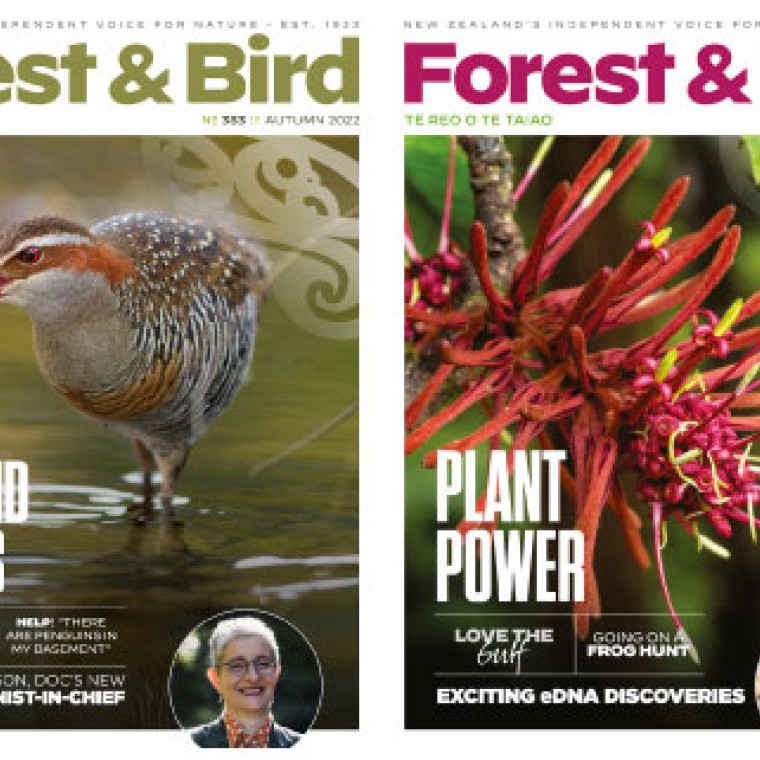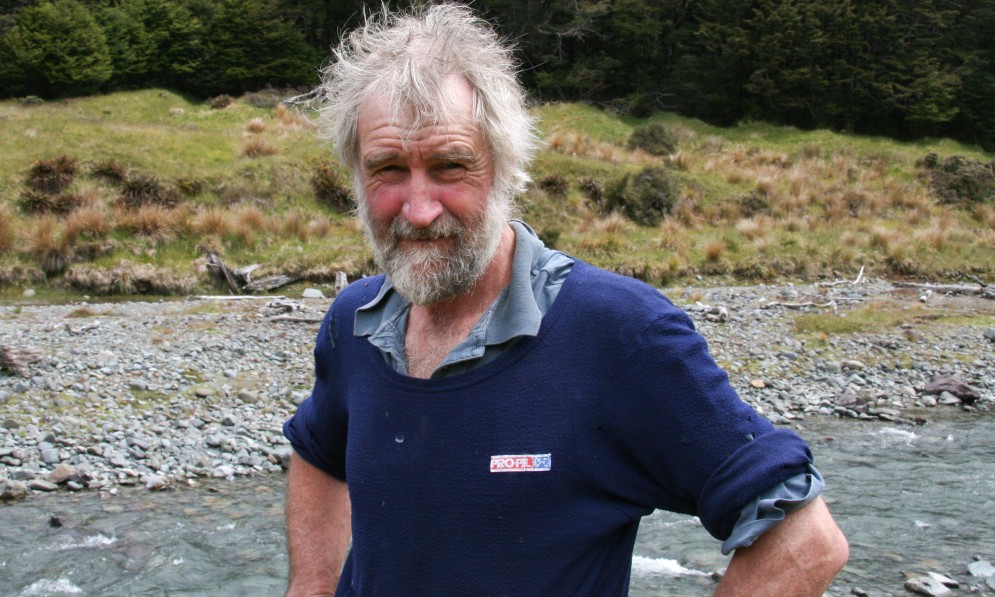Ian (Mo) Turnbull of Hāwea has received Forest and Bird’s prestigious Old Blue award for his outstanding service to Forest & Bird’s Central Otago Lakes branch and to conservation in his region.
The retired geologist has always been close to the land and after retiring to Central Otago in 2013, he and late partner Jane Forsyth became very active in the local Forest & Bird branch. Mo was also a founding trustee on the Southern Lakes Sanctuary Trust, a fundraising and planning consortium of conservation organisations in the region.
Mo and his team have vastly expanded the Forest & Bird Makarora predator control project, hugely increasing the number of traps, and helping Sanctuary staff put out hundreds of bait stations. The aim of the project is to improve protection for the critically endangered population of mohua yellowhead in the Makarora Valley as well as other rare and endangered native species.
“Mo’s extreme modesty, self-deprecating manner, and inexhaustible patience is only equalled by his tenacity, tolerance, and simple hard work,” says Central Otago branch chair Andrew Penniket.
“Without Mo at the helm, it is likely our trapping network would still be in its infancy and the Makarora trapping project would have achieved only a fraction of what has been done.”
He was an influential member of the Southern Lakes Sanctuary Trust, fostering several programmes to expand conservation in the Central Otago Lakes region and helping recruit workers through the Jobs for Nature programme.
Mo is very reluctant to take credit and always emphasises the role of the teams he has worked with.
“Through the Southern Lakes Sanctuary, there’s been an amazing increase in what we’re able to do. The sanctuary has some very smart people, they’re very keen and have raised money from all sorts of places,” he says.
Andrew Penniket says Mo had also written dozens of reports to funders and hundreds of newsletters for Forest & Bird branch members, keeping them informed, motivated, and entertained. He had also worked towards making the branch’s trapping programmes as carbon neutral as possible by encouraging the use of electric vehicles for transport and planting to offset emissions.
Mo’s attachment to Makarora goes back to childhood when the family had a holiday house there. Over the years the numbers of kea and other birds declined, and this has motivated him in his conservation efforts.
“When you can, you try and fix it and you can only do that when you have a group of good people,” he says.
“The volunteers are a really good bunch and without them and without the Southern Lakes Sanctuary, we would just about be dog tucker by now.”
The battle against predators is never ending at Makarora and can suffer setbacks, especially following years when beech seed is plentiful, leading to a vast increase in the number of rats and stoats. But he and his team are motivated by “the more birds we see, the more mistletoe we see, and the more wētā we find grubbing around in the bush”.
He is also gratified seeing land he and Jane replanted and covenanted on the Otago Peninsula decades ago become a forest. His legacy will also include a QEII covenanted 80ha block of kahikatea swamp bush he owns inland from Bruce Bay on the West Coast where he does more predator trapping.

